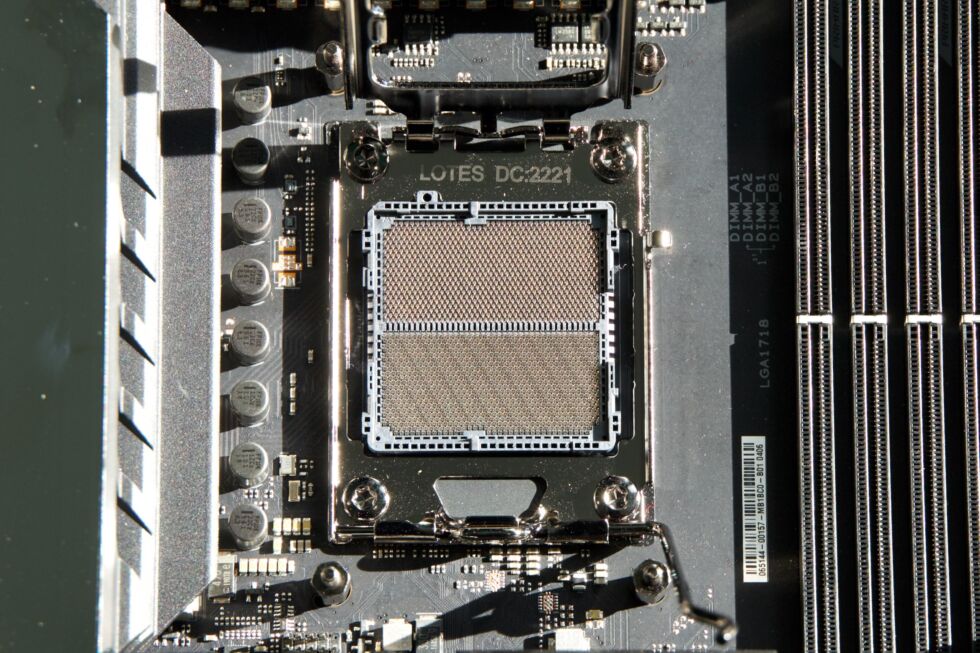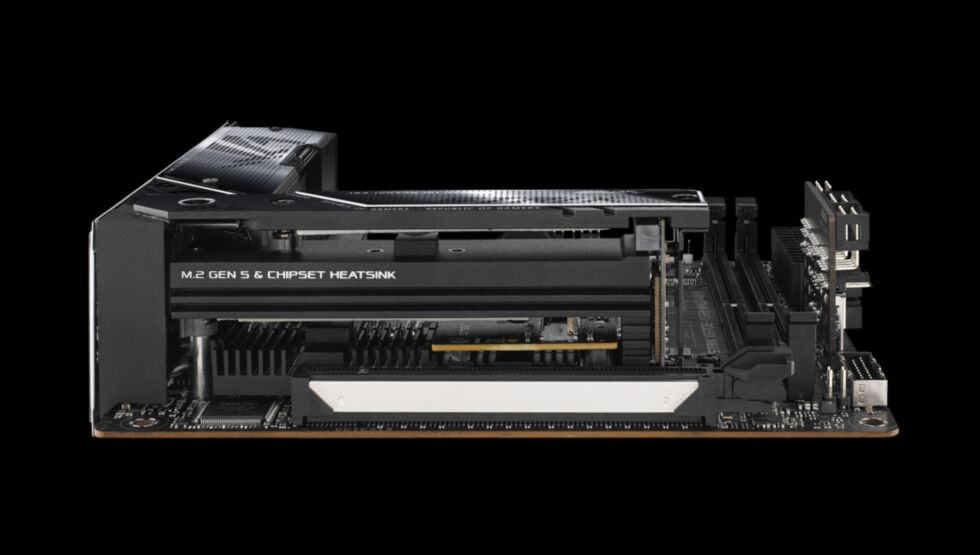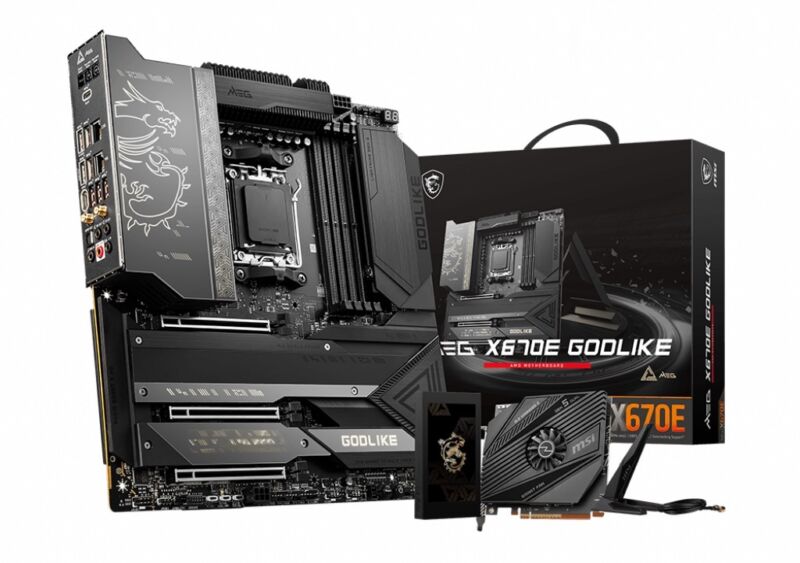Building a PC around a new processor is expensive at the best of times, and that's triple-true of AMD's new Ryzen 7000 chips. AMD has started with its $300-and-up high-end chips, leaving mid-range options until next year. The CPUs only support DDR5 RAM, which is still more expensive than DDR4 at the same capacities. And the first round of motherboards that include the new AM5 CPU socket are here, and they're pretty expensive.
The cheapest motherboard currently available from the likes of Newegg and Micro Center is the ASRock X670E PG Lightning, which, despite being the least expensive motherboard available, is an X670E board that will support PCIe 5.0 GPUs when they eventually arrive (even the newly announced GeForce RTX 4000-series still uses PCIe 4.0). The motherboard is missing a few features we like to see—no built-in Wi-Fi and Bluetooth, limited audio outputs, relatively small heatsinks for the voltage-regulator modules (VRMs) and other components—but it does have four M.2 SSD slots of varying speeds and plenty of hookups for case fans and front USB ports.
If it's something you care about, the cheapest X670E board with Wi-Fi is also one of ASRock's, the X670E Pro RS, available for $280 at Newegg and Micro Center.

As you go up in price toward the $500 mark, you start to see more of the additions that high-end boards are known for: larger heat sinks for the VRMs and, often, large one-piece metal heatsinks that cover more of the SSD slots and make the board look a bit cleaner inside a case with a side window. The Asus ROG STRIX X670E-F ($450), Gigabyte X670E Aorus Master ($500), and MSI MPG X670E Carbon Wifi ($480) are in this cohort, with their big, flashy RGB heatsinks. Compared to the lower-end boards, they also tend to have more USB-C ports on the back and a higher ratio of USB 3.x ports to USB 2.0 ports.
Fans of tiny builds will be disappointed to see that there's just one mini-ITX AM5 board available so far, and it's pretty pricey: the Asus ROG STRIX X670E-I Gaming WiFi ($470) looks capable but also a bit weird, with an odd external hub called the "ROG Strix Hive" and a protruding daughterboard for USB 2.0 port headers, the front panel headers, and some SATA ports that may be an awkward fit in some especially small ITX cases.

The award for "most absurdly expensive motherboard" goes to the MSI MEG X670E Godlike, which at $1,300 is nearly twice as expensive as the next-most-expensive board. A hulking black monolith, this board is coated in shiny heatsinks and attempts to justify its price by including a riser card for additional PCIe 5.0 SSDs and a built-in 10Gbps Ethernet port.
Prices won't be this silly forever—or even (hopefully) for very long. This first wave of boards is heavily tilted toward the more-expensive X670E variant (20 boards on Newegg, versus just four X670 boards), which need to meet the more robust signaling requirements of PCI Express 5.0 for the graphics slot.
In October, AMD will also launch B650 and B650E boards, which only use a single chipset die whereas X670 uses two—these motherboards ought to bring AM5 support well below $200 while still delivering good performance. Next year, as DDR5 prices steadily come down and AMD launches more midrange Ryzen 7000 series CPUs, it should be easier to recommend an AM5 build to budget-conscious buyers. AMD plans to support AM5 until at least 2025, so a board that you buy now ought to be eligible for at least a few new CPUs in the next few years, too.
Ars Technica may earn compensation for sales from links on this post through affiliate programs.



3175x175(CURRENT).thumb.jpg.b05acc060982b36f5891ba728e6d953c.jpg)

Recommended Comments
There are no comments to display.
Join the conversation
You can post now and register later. If you have an account, sign in now to post with your account.
Note: Your post will require moderator approval before it will be visible.